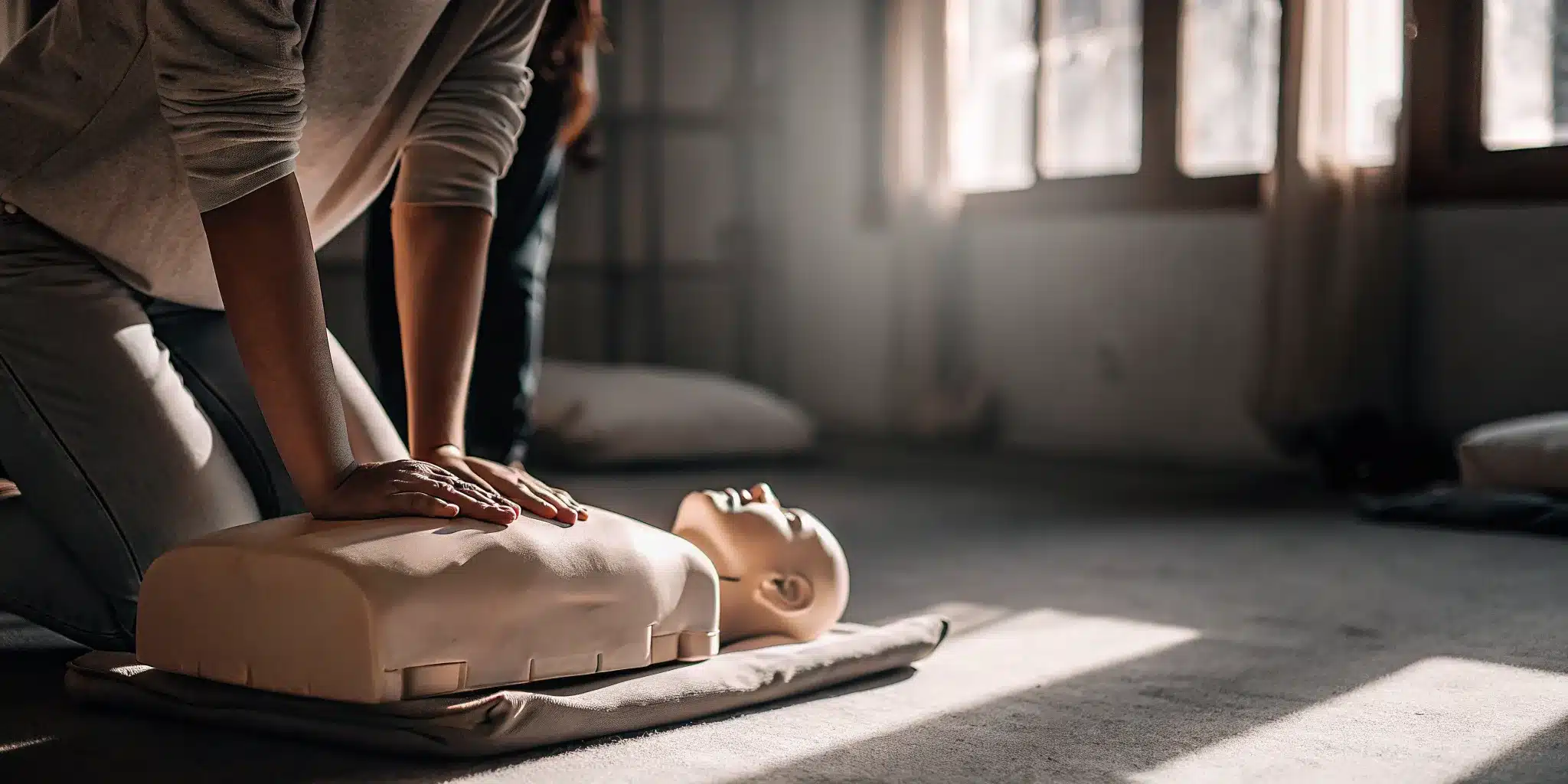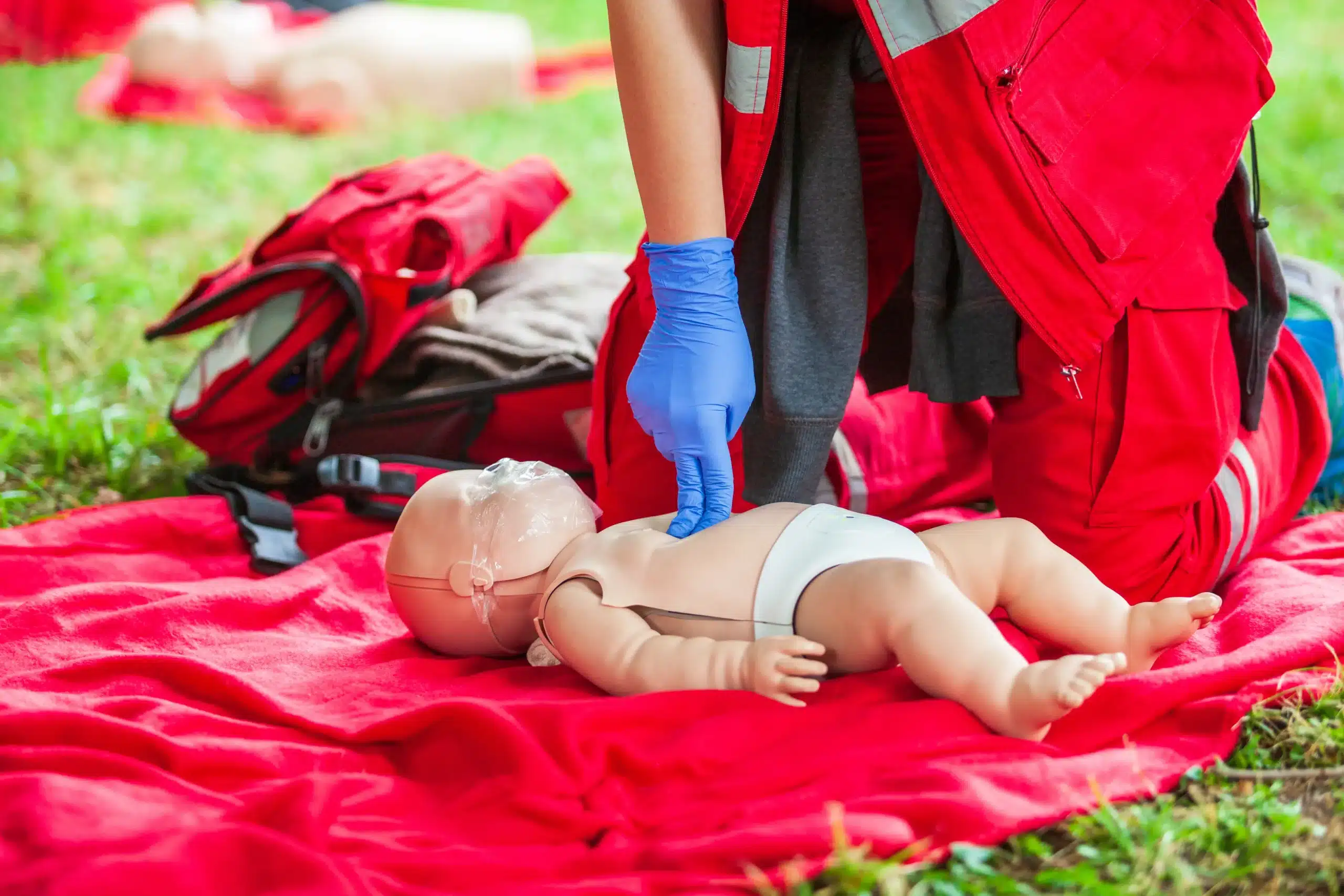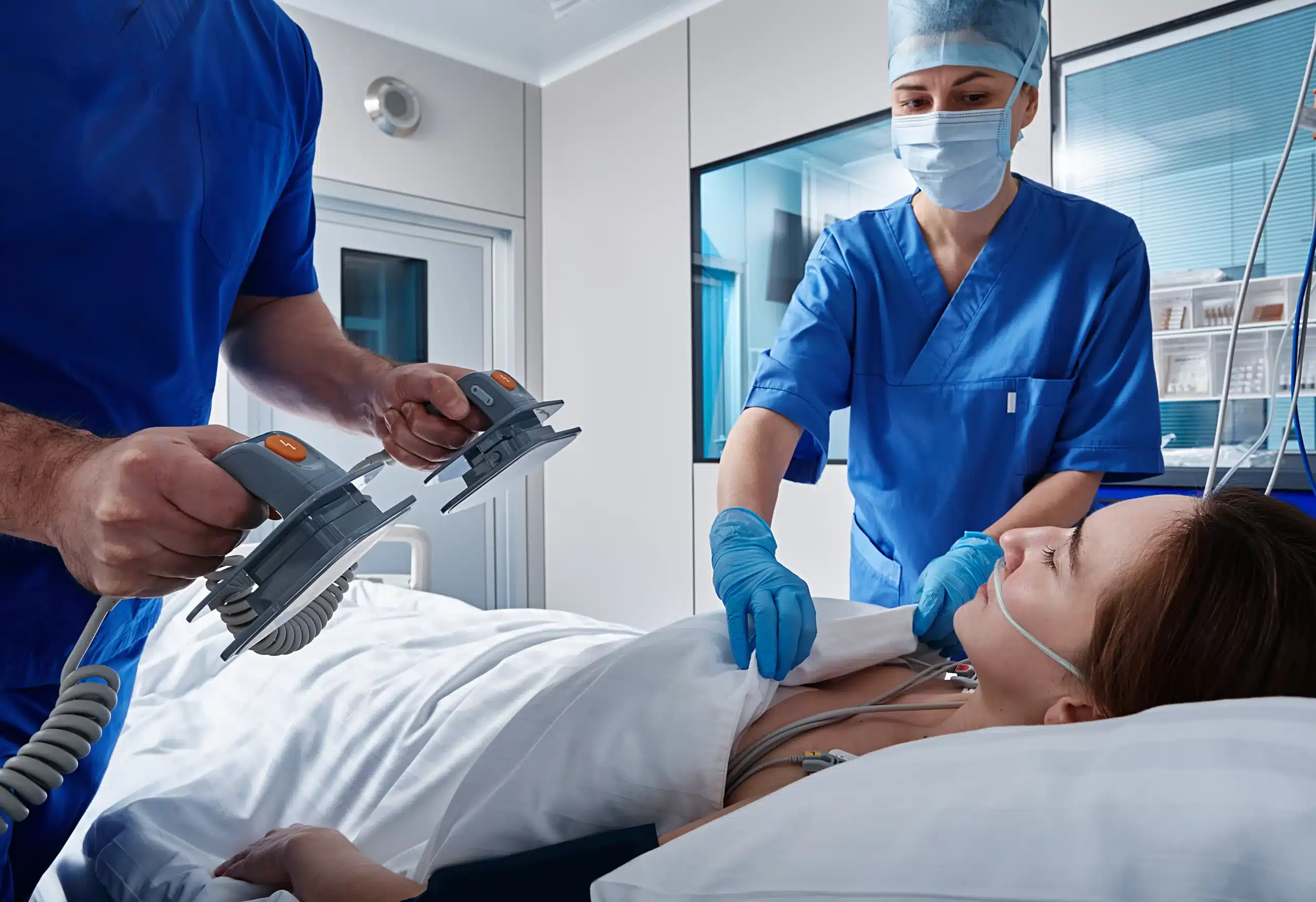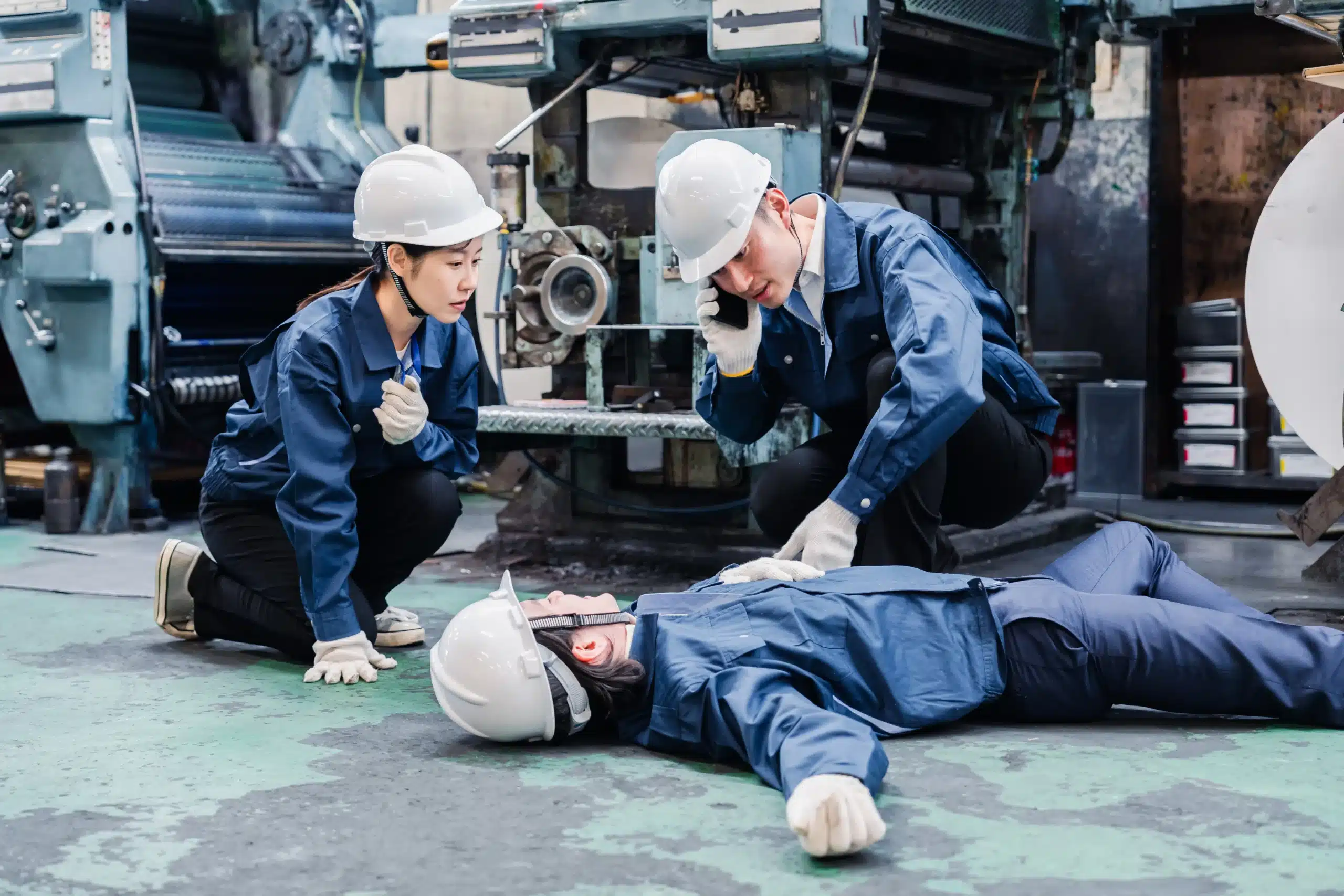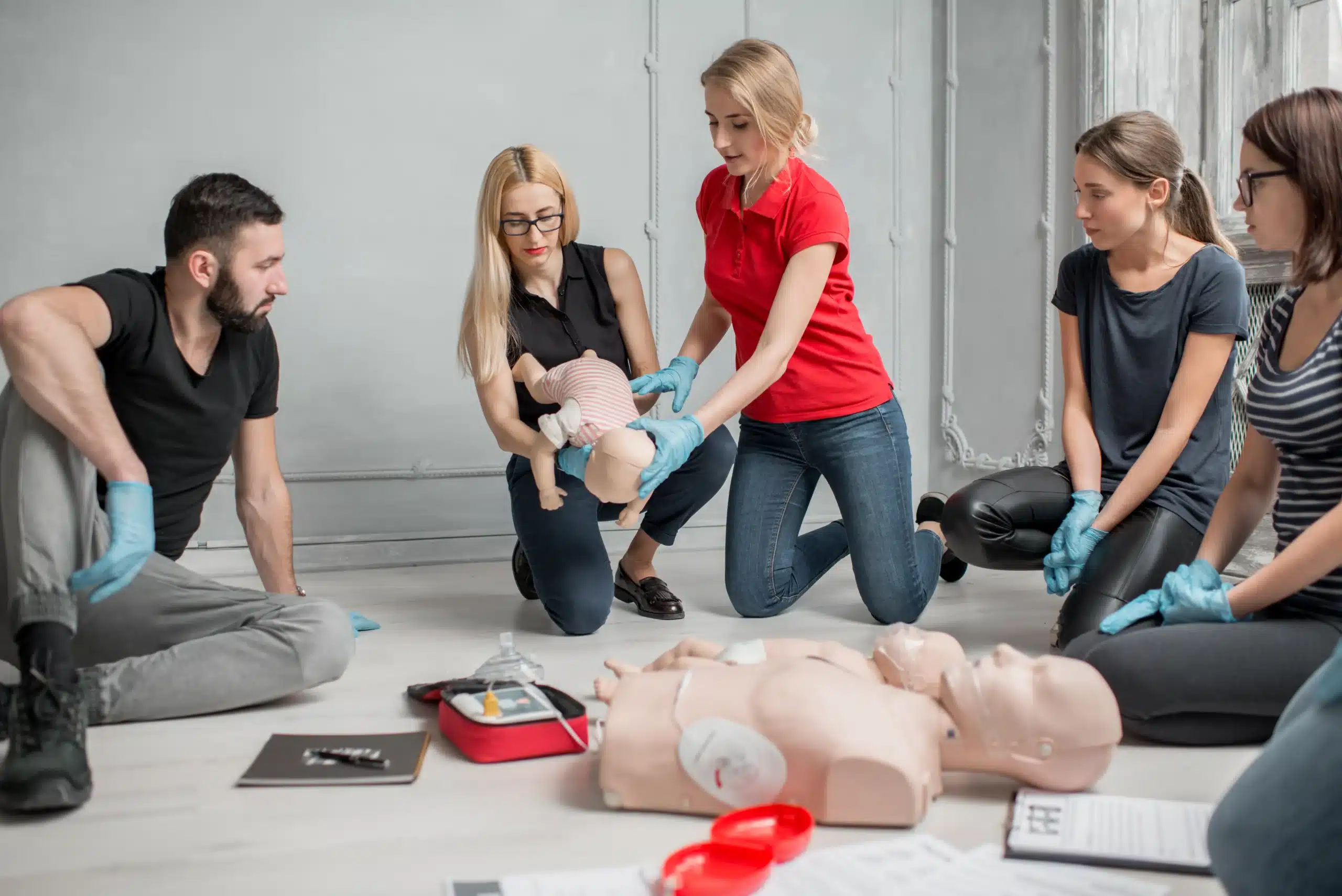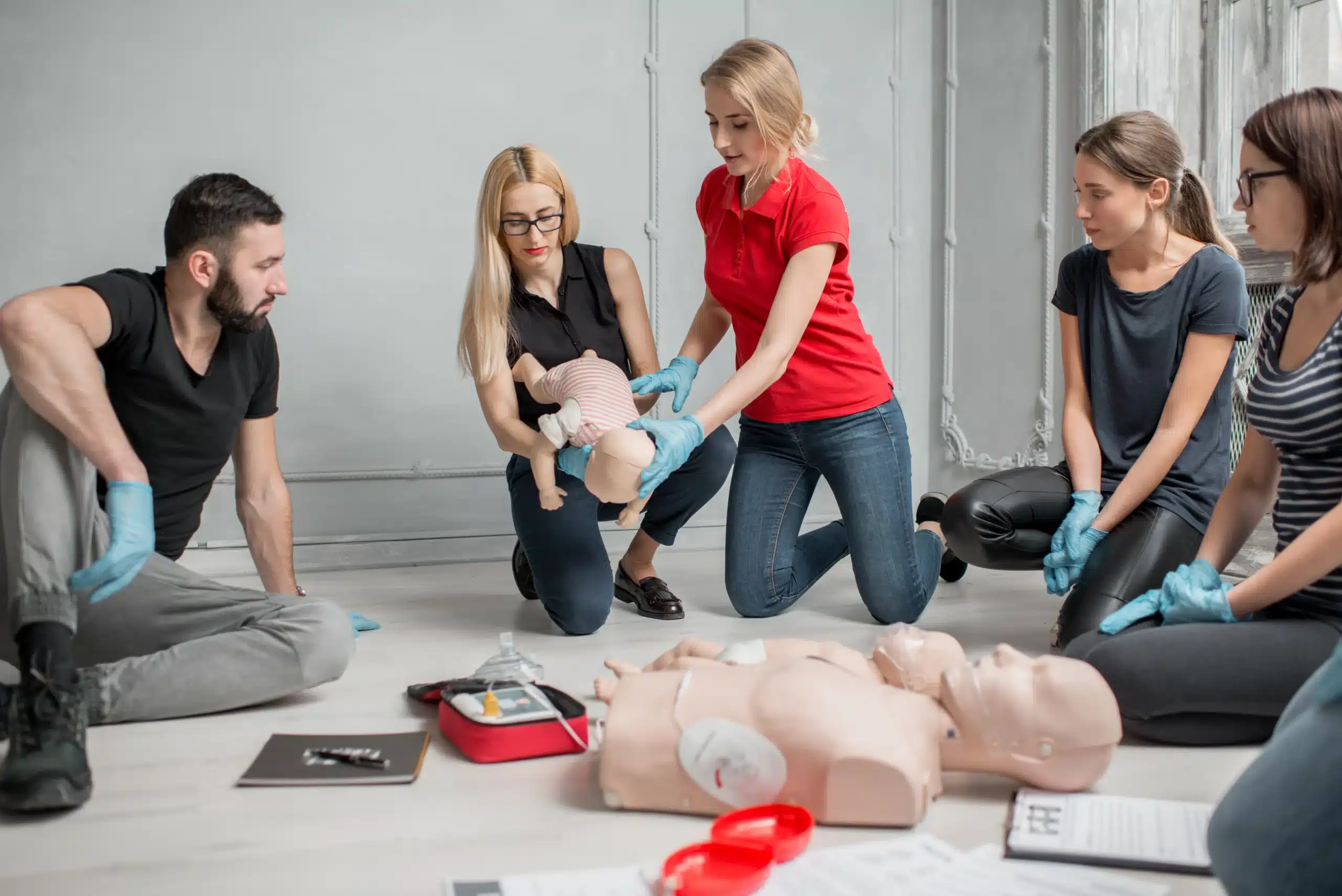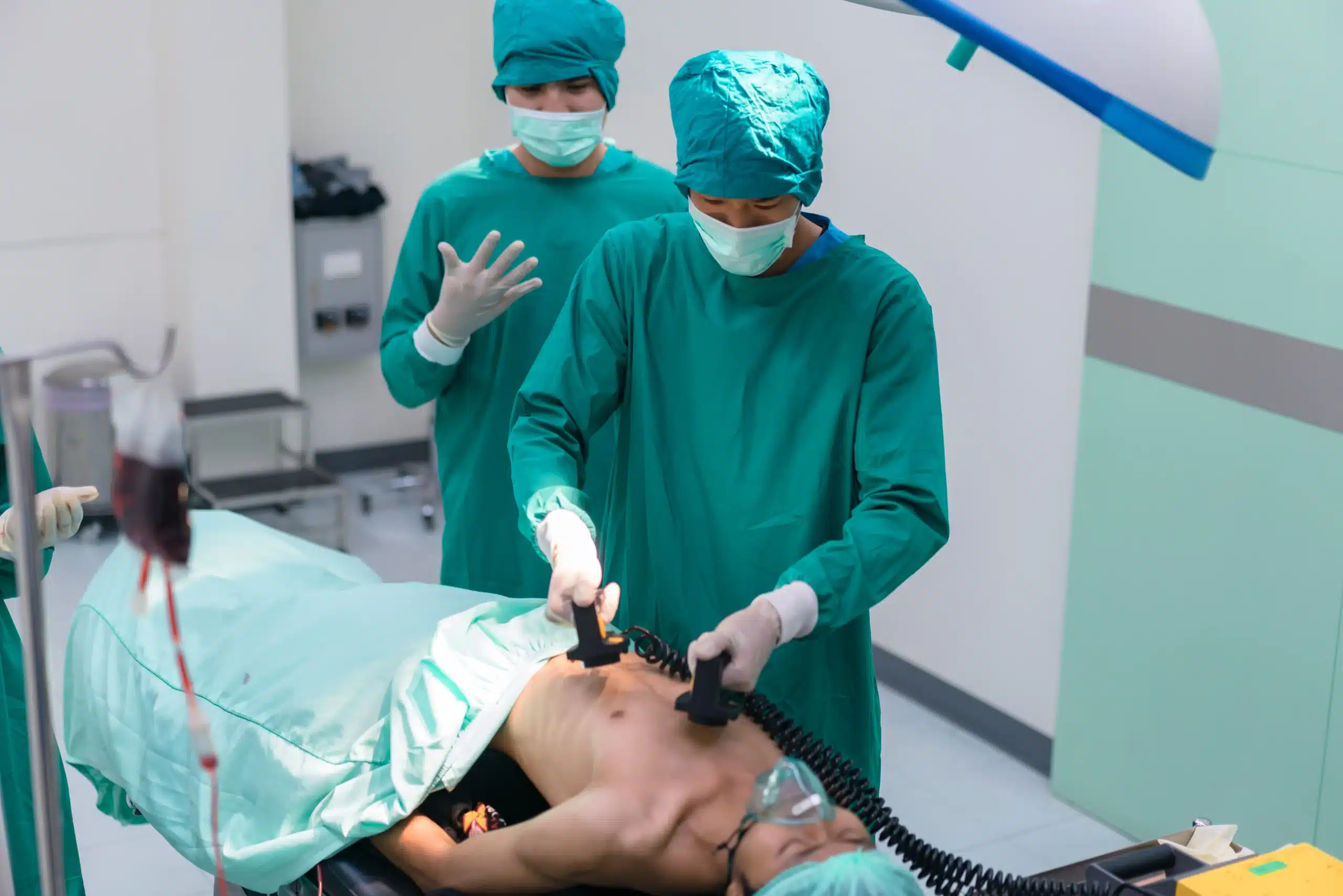In the face of a medical emergency, seconds can matter. CPR training in Santa Clara empowers you to act quickly and confidently, providing immediate assistance while professional help is on the way. This comprehensive guide explores the various CPR training options available in Santa Clara, catering to everyone from healthcare professionals to concerned citizens. We’ll cover the core skills taught in each course, discuss the importance of certification, and provide resources to help you find the right training program. Let’s dive in and equip you with the knowledge and skills to potentially save a life.
Key Takeaways
- Find the right CPR class for your needs: Whether you’re a healthcare professional, a parent, or simply want to be prepared for emergencies, various CPR certifications cater to different needs and experience levels.
- Maintain your CPR skills: Regular renewal and continuing education are essential for staying up-to-date with the latest CPR guidelines and techniques, ensuring you can provide effective assistance when needed.
- Select a reputable training provider: Look for qualified instructors, comprehensive course content, and convenient class options when choosing a CPR training provider. Consider factors like class size and location to maximize your learning experience.
What is CPR Training?
CPR training equips you with the skills to respond to medical emergencies and potentially save lives. Different CPR courses cater to various needs, from healthcare professionals to everyday people. Let’s explore some of the key types of CPR training available.
BLS for Healthcare Providers
Basic Life Support (BLS) CPR classes are designed for healthcare providers like doctors, nurses, and paramedics. These BLS courses cover core skills such as high-quality chest compressions, rescue breaths, and using an AED. They also emphasize team dynamics and effective communication during emergencies. The American Heart Association (AHA) sets the standard for BLS training, ensuring healthcare professionals have the up-to-date knowledge and skills to handle life-threatening situations. AHA guidelines are the foundation for many CPR courses.
ACLS
Advanced Cardiovascular Life Support (ACLS) training builds upon the foundation of BLS. ACLS certification goes deeper into the management of cardiovascular emergencies, including advanced airway management, rhythm recognition, and pharmacology. It’s essential for healthcare professionals working in critical care settings, emergency rooms, and intensive care units.
PALS
Pediatric Advanced Life Support (PALS) focuses on the specific needs of infants and children facing medical emergencies. PALS training covers everything from recognizing respiratory distress and shock to providing appropriate interventions for pediatric cardiac arrest. Like BLS and ACLS, PALS courses are developed by the AHA and are crucial for healthcare providers working in pediatrics, emergency medicine, and other areas where they might encounter pediatric emergencies. For more information on PALS, visit the AHA website.
Heartsaver CPR/AED
Heartsaver CPR/AED training is designed for anyone who wants to learn CPR and how to use an AED, even without a medical background. This course is ideal for teachers, coaches, security guards, and anyone who wants to be prepared to help in an emergency. The Heartsaver course covers adult, child, and infant CPR, as well as how to recognize and respond to choking emergencies. The Santa Clara County Fire Department (SCCFD) offers a blended learning option, combining online coursework with in-person skills practice.
Hands-Only CPR and Choking Relief
Hands-Only CPR is a simplified version of CPR that focuses on continuous chest compressions. It’s a valuable skill for bystanders to learn, as it can significantly improve the chances of survival for someone experiencing sudden cardiac arrest. Combined with training on choking relief for adults, children, and infants, this Hands-Only CPR class empowers anyone to respond effectively in a variety of emergency situations. The SCCFD also provides training in this essential life-saving technique. You can find more information on the SCCFD website.
CPR Training Costs in Santa Clara
Knowing the cost of CPR training is an important step in finding the right class. Several factors influence pricing, so understanding them will help you evaluate your options.
Factors Affecting Course Prices
CPR and First Aid training equips people with the skills to handle emergencies. The value of this knowledge is reflected in the course fees, which often consider the comprehensiveness of the material. Hands-on training, a hallmark of quality CPR instruction, can also influence the price. More in-depth, hands-on training typically comes with a higher price tag. Courses designed for specific groups, like healthcare providers needing BLS certification, also often have different pricing than general community CPR courses. The certifying organization also plays a role in the final cost.
Typical Prices for Different Courses
While prices vary, having a general idea of the costs associated with different CPR certifications can be helpful. An American Heart Association BLS Provider class, for example, might cost around $250. Specialized courses, such as those required for healthcare professionals or those including AED training, may have different fees. Safety Training Seminars offers various American Heart Association courses, including CPR, BLS, ACLS, and PALS, allowing you to find a course that meets your needs and budget. Contacting providers directly is always recommended to get the most up-to-date pricing.
Instructor Qualifications and Expertise
When your health is on the line, you want to know the person providing CPR training knows their stuff. Choosing a class with qualified instructors is key to receiving effective, up-to-date training. But what exactly should you look for?
Certification and Continuing Education
First, confirm your instructors hold certifications from a reputable organization like the American Heart Association (AHA). These certifications demonstrate a commitment to high standards and the latest CPR guidelines. Quality training centers ensure their instructors’ certifications are current and that they participate in continuing education. This ongoing training keeps instructors informed about any changes to CPR techniques or protocols, ensuring you receive the most accurate and effective training.
Experience and Specialties
Beyond certification, consider the instructor’s practical experience. While initial certification is essential, real-world experience builds an instructor’s skills and ability to handle various emergency scenarios. Ask about an instructor’s background and experience teaching CPR. A seasoned instructor offers valuable insights and creates a more engaging learning environment. If you’re looking for specialized training, such as BLS for Healthcare Providers, find an instructor with specific expertise in that area. An instructor’s ability to clearly explain concepts, demonstrate techniques, and answer questions thoroughly contributes to a positive learning experience. Effective instructors also possess qualities like patience, confidence, and strong communication skills, creating a comfortable learning environment.
Register for CPR Training
Ready to learn CPR? Registering for a class is easier than you think. Whether you prefer online registration or booking a group session, there are several convenient options in and around Santa Clara.
Register Online
Several platforms offer online registration for CPR training. The Santa Clara County Fire Department frequently offers CPR and First Aid courses and often uses Eventbrite for registration. Check their website for the latest schedule. You can also find CPR classes offered daily at Bishop Ranch in nearby San Ramon, and throughout Northern California via Safety Training Seminars. Their customer service representatives are available daily from 8 am to 10 pm to answer any questions you may have. If you’re a Mission College student, register for CPR certification through the My Mission Portal.
Group Bookings
Need to train a group? Safety Training Seminars offers American Heart Association CPR, BLS, ACLS, and PALS courses in Santa Clara. They can even conduct the training at your location, making it simple to schedule a session that works for everyone. This on-site training option extends to BLS, CPR, and First Aid courses, ensuring your team can get certified without leaving the workplace. Contact Milpitas CPR Classes to discuss group training options.
What Happens During CPR Training?
Curious about what goes on in a CPR class? CPR training combines textbook learning with hands-on practice to equip you for real-life emergencies. Here’s a glimpse into a typical class:
Course Structure and Practice
CPR and First-aid classes in Milpitas offer a comprehensive curriculum designed to prepare you for various medical emergencies. You’ll learn to recognize the signs of a heart attack, stroke, and other critical conditions. These courses prioritize hands-on training and interactive learning. You’ll practice techniques on mannequins, building muscle memory and confidence in your skills. Safety Training Seminars provides American Heart Association courses, including CPR, BLS, ACLS, and PALS, in Santa Clara, ensuring top-notch instruction based on the latest guidelines. This practical approach helps you understand how to respond effectively under pressure, not just memorize steps.
Assessment and Certification
After the training portion, you’ll complete an assessment to show off your new skills. This usually involves performing CPR on a mannequin and answering questions about the procedures. Once you successfully complete your CPR and First-Aid certification class, you’ll receive an American Heart Association certification card, valid for two years. You get your card the same day you finish the class, so you’re immediately prepared to help in emergencies. This nationally recognized certification demonstrates your commitment to providing quality care when it matters most.
Benefits of CPR Certification
Knowing CPR can make a real difference in someone’s life. It empowers you to act quickly and effectively during medical emergencies, offering immediate assistance while professional help is on the way. This section explores the advantages of CPR certification, both personally and for the wider community.
Personal and Professional Advantages
CPR and first-aid training provides you with invaluable skills to respond confidently in emergencies. This knowledge enhances your personal safety and the safety of your loved ones, and can also open doors professionally. Many industries, especially healthcare, education, and public safety, view CPR certification as a highly desirable asset. Having this credential on your resume can give you a competitive edge, demonstrating your preparedness and commitment to safety. The confidence you gain knowing you can handle a crisis is a significant personal benefit. Successfully completing a CPR and first-aid course, like those offered by Milpitas CPR Classes through Safety Training Seminars, provides you with an official certification card, valid for two years, from recognized organizations such as the American Heart Association.
Community Impact
CPR and first-aid certification contributes significantly to the overall safety and well-being of our communities. By equipping individuals with these life-saving skills, we create a network of prepared responders. This collective knowledge fosters a safer environment for everyone—neighbors, colleagues, and even strangers in public spaces. CPR and first-aid training empowers individuals to act decisively, potentially reducing response times and improving outcomes in emergencies. The more people in a community trained in CPR, the greater the chance of a positive outcome during a medical crisis. These classes play a crucial role in promoting a culture of preparedness and resilience, ultimately strengthening the community. The availability of BLS CPR classes in Santa Clara, offered by the American Heart Association, is a vital resource in building this network of trained responders.
Maintain Your CPR Certification
CPR isn’t a learn-it-and-forget-it skill. Staying current with the latest guidelines ensures you’re prepared to provide the most effective care during an emergency. This section covers how to maintain your certification and why it matters.
Renewal and Continuing Education
CPR guidelines and techniques evolve with medical advancements. To maintain your CPR certification, regular renewal is key. Certifications, such as those from the American Heart Association, are typically valid for two years. Afterward, you’ll need a renewal course to keep your skills and certification up-to-date. This refresher training covers any updated guidelines and reinforces core techniques. Continuing education is also crucial for CPR instructors. Ongoing training ensures instructors stay informed and teach the most effective, life-saving techniques. The importance of regular training updates is often emphasized by organizations like the AHA to maintain instructor status and ensure they’re teaching current best practices. This commitment to ongoing learning benefits everyone receiving CPR training.
Top Santa Clara CPR Training Providers
Finding the right CPR training can feel overwhelming with so many options. To help you, we’ve compiled a list of reputable providers in Santa Clara. Remember to check their websites for the most up-to-date course schedules and pricing.
Santa Clara County Fire Department
The Santa Clara County Fire Department (SCCFD) offers a few different CPR and AED training options. You can choose from the AHA Heartsaver CPR/AED Blended Learning course, the AHA Heartsaver CPR/AED 4-Hour In-Person course, or the Hands-Only CPR/AED and Choking Relief class.
Milpitas CPR Classes
Milpitas CPR Classes partners with Safety Training Seminars to offer American Heart Association (AHA) courses, including BLS, ACLS, PALS, and CPR. Serving Milpitas, San Jose, and Santa Clara, they offer convenient daily classes, making it easier to fit training into your schedule.
American Red Cross Santa Clara Chapter
The American Red Cross provides a range of CPR and first aid training. They focus on hands-on learning and interactive activities to get you comfortable responding to emergencies.
Stanford Health Care
Stanford Health Care offers CPR training as part of their commitment to community health. Check their website for specific course offerings and schedules.
Safety Training Seminars
Safety Training Seminars offers AHA-approved certifications in CPR, BLS, ACLS, PALS, and First Aid. With daily classes and a low price guarantee, they are a convenient and affordable option. They also offer the RQI program for healthcare professionals needing BLS renewal.
Mission College
Mission College provides AHA CPR certification classes covering infant, child, and adult CPR. They typically offer multiple sessions each semester.
Choose the Right CPR Training
Finding the right CPR training can feel overwhelming with so many options. But by understanding your needs and doing some research, you can easily find the perfect course.
Assess Your Needs and Compare Options
First, think about why you want CPR training. Are you a healthcare provider needing to maintain your license? Or are you a parent wanting to learn basic life support for emergencies at home? Your reason will determine the best course for you. For example, healthcare providers often take BLS courses, while community members might choose a CPR and First Aid course. Safety Training Seminars offers various American Heart Association courses in over 60 cities, making it convenient to find a class near you. If you’re a medical professional in Milpitas, San Jose, or Santa Clara, consider their RQI program for maintaining your resuscitation skills.
Next, compare different CPR training providers. Look at what courses they offer, the instructors’ qualifications, and the overall cost. Reading reviews can also give you a sense of other students’ experiences. Consider factors like class size and location. A smaller class might offer more personalized instruction, while a convenient location makes attending easier.
Address Concerns and Challenges
Learning CPR involves mastering both theoretical knowledge and practical skills. Many students initially feel apprehensive about performing chest compressions or rescue breaths. A good instructor will create a supportive learning environment where you can practice and ask questions. Don’t hesitate to voice any concerns – your instructor is there to help you succeed. Remember, even seemingly small details, like allowing for full chest recoil during compressions and smooth transitions during two-person CPR, are crucial for effective CPR. Focus on mastering these techniques during your training. High-quality CPR training empowers you to confidently respond to emergencies and potentially save a life.
Related Articles
- BLS ACLS Courses in San Jose: A Complete Guide – Milpitas CPR Classes
- CPR Certification in Milpitas: Your Comprehensive Guide – Milpitas CPR Classes
- AHA ACLS Classes in Milpitas, CA – Milpitas CPR Classes
- AHA PALS Classes in Milpitas, CA – Milpitas CPR Classes
- The Importance of Workplace CPR and First-Aid Training
Frequently Asked Questions
What’s the difference between BLS and CPR? CPR is the core skill within BLS. Think of BLS as a broader approach to life support, encompassing CPR, AED use, and other essential techniques, especially for healthcare providers. A regular CPR class teaches you the basics, while a BLS course provides a more comprehensive understanding for professionals.
How do I choose the right CPR class? Consider your specific needs. Are you a healthcare professional, a concerned parent, or someone seeking job-related certification? Healthcare providers typically need BLS or ACLS, while community members often opt for Heartsaver CPR/AED or Hands-Only CPR. Think about your schedule and budget too, as course lengths and costs vary.
How long is CPR certification valid? CPR certifications are typically valid for two years. Staying current is crucial, as guidelines and best practices can change. Renewal courses ensure your skills and knowledge are up-to-date.
What if I’m nervous about performing CPR in a real emergency? It’s normal to feel a little apprehensive. High-quality CPR training emphasizes hands-on practice and creates a supportive learning environment. Instructors understand these concerns and will guide you through the process, building your confidence. Remember, any action is better than inaction in a life-threatening situation.
Why should I get certified if I can learn CPR online? While online resources offer valuable information, formal certification demonstrates a commitment to learning and adhering to established guidelines. It also provides hands-on practice with feedback from qualified instructors, leading to greater confidence and competence in real-life emergencies. Plus, many workplaces and organizations require official certification.
